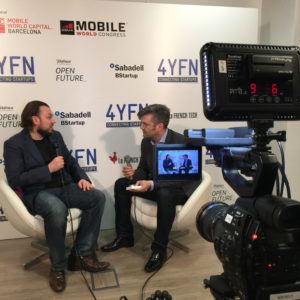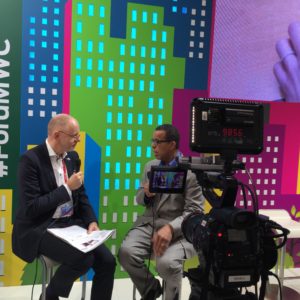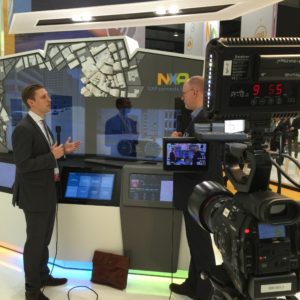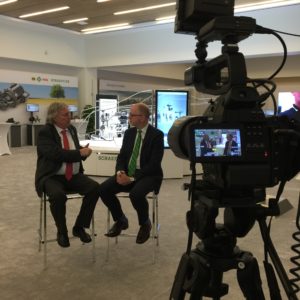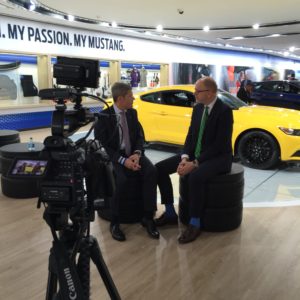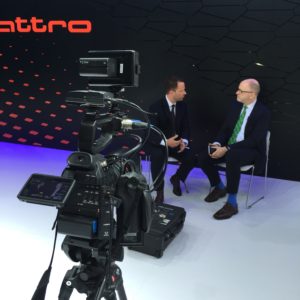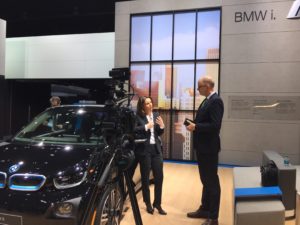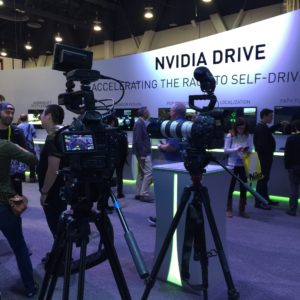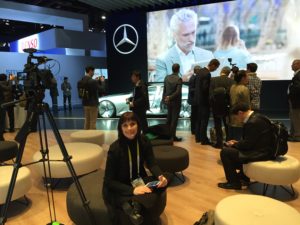 First, a little background. I shoot a number of trade shows annually both local and international. They range in subject matter from New Mobility at IAA (future of smart cities and automotive in Frankfurt) to CES (consumer electronics in Las Vegas) to the Detroit auto show and World Mobile Congress in Barcelona.
First, a little background. I shoot a number of trade shows annually both local and international. They range in subject matter from New Mobility at IAA (future of smart cities and automotive in Frankfurt) to CES (consumer electronics in Las Vegas) to the Detroit auto show and World Mobile Congress in Barcelona.
I’m currently packing up to go work DEMA (Diving equipment Manufacuring Association) and I had an idea!
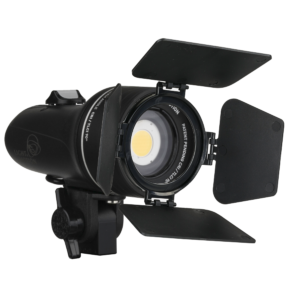 My absolute, hands down, favorite underwater video light manufacturer, Light & Motion is now manufacturing a cross over light. A beautiful studio light that can also get wet. If my experience with their products over the past decade is any indicator (hugely reliable, beautiful light, fantastic customer support) then this should be the (topside) light of my dreams.
My absolute, hands down, favorite underwater video light manufacturer, Light & Motion is now manufacturing a cross over light. A beautiful studio light that can also get wet. If my experience with their products over the past decade is any indicator (hugely reliable, beautiful light, fantastic customer support) then this should be the (topside) light of my dreams.
Since I’ll be shooting a lot of run and gun floor interviews, I thought, what better way to test and show solidarity with their product line than seeing if I could borrow one as my ‘on camera’ light for the show.
I was toying with the idea of picking up a couple of Lume Cubes and running one on camera and kinda clamping the rest to things in our booth for the shots with a backdrop or product, but I just wasn’t sure about the burn time or the quality of those lights. Their size is brilliant for travel and creative lighting, their cost potentially a little high for what you are getting, I even picked up a bunch of adaptors so I could attach them to go-pro mounting accessories. But the bottom line, I was not willing to risk a job on an unknown. What if they cause flicker like crazy, what if they are not wide enough beam, what if the light has hot spots and isn’t buttery smooth. So, I chickened out and it’s back to my standard, tried and true small LED panels.
Anyone who has shot with me locally, either underwater or topside, knows that for shoots I can drive to I am notorious for bringing everything we could possibly need and then some. Kitchen sink anyone? Guilty….
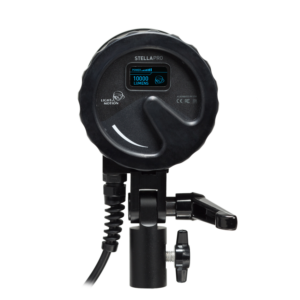 But traveling gigs are an entirely different matter. Anything that can do double duty, any way to lighten the load and be more efficient I’m in! So it is imperative that _everything_ be as compact as it can without compromising quality and reliability. Well, except for camera that is, I still take my Canon C300 (and C100) if its interviews, because that camera just nails it with regards to people on camera, and it is an absolute workhorse.
But traveling gigs are an entirely different matter. Anything that can do double duty, any way to lighten the load and be more efficient I’m in! So it is imperative that _everything_ be as compact as it can without compromising quality and reliability. Well, except for camera that is, I still take my Canon C300 (and C100) if its interviews, because that camera just nails it with regards to people on camera, and it is an absolute workhorse.
Why Stella then? If i’ve got something that works, why am I still looking for more? (Other than i’m always looking for more, lol)
1) The light from my cheap panels isn’t perfect, it is solid but not perfect. I’d like more light, but i’d like it compact. Rumor has it that the Stella is the most powerful, robust, compact battery operated light in the industry. With the self-contained batteries they can be set up in seconds – you know me and messy cords don’t get along. Because they are drop tested onto concrete from 1 meter – 6 times, once on each side they can be thrown into a backpack to perform in the most remote and harshest locations (or my gear bag) without worry.
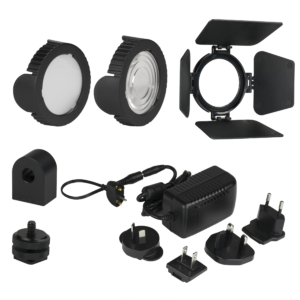 2) Billions of lithium batteries. Of course they are the same batteries that the Atomos Shogun and Ninja Blade use but still, travel with batteries like that leads to all sorts of charging entertainment and airport inspection. Stella lights have their high-capacity lithium batteries integrated into the light so they do not cause the concern that “spare” lithium ion batteries do when traveling by air.
2) Billions of lithium batteries. Of course they are the same batteries that the Atomos Shogun and Ninja Blade use but still, travel with batteries like that leads to all sorts of charging entertainment and airport inspection. Stella lights have their high-capacity lithium batteries integrated into the light so they do not cause the concern that “spare” lithium ion batteries do when traveling by air.
3) Once you add the batteries, they are no longer light weight and compact. I can use the smaller capacity batteries on them but then i risk the sudden death of the light going out in the middle of interview. Not professional. Stella’s batteries are fast charging and if you want to plug them into a spare battery you can with a D-Tap and you can run them off wall power. The Stella lights have a battery life indicator so you always know where you are with run time, and with my current stable of SOLA lights, I find the battery indicator is quite accurate and reliable.
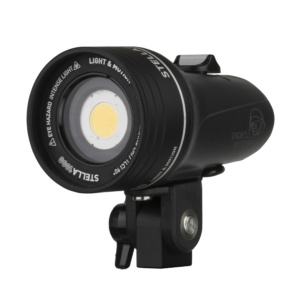 4) (which should actually be number 1) Waterproof. I have a number of upcoming shooting days out on the Olympic Peninsula. I have wet gear for my cameras (rain cover, Ewa-Marine bags and worst case – full on UW housing) but what about lighting? My SOLA lights are not designed for topside use and I love using them UW too much to risk cooking them to death by shooting topside. The Stella Pro 5000, 2000, and 1000 are fully waterproof, seriously!?!? They are IP-68 rated and are submersible to 100 meters. The cinema-grade COB LED provides high CRI and TLCI ratings of 90+. The thermal design allow operating them from the internal battery for up to 90 minutes on high and up to 11 hours on low (goodness help me if I end up doing interviews for 11 hours)
4) (which should actually be number 1) Waterproof. I have a number of upcoming shooting days out on the Olympic Peninsula. I have wet gear for my cameras (rain cover, Ewa-Marine bags and worst case – full on UW housing) but what about lighting? My SOLA lights are not designed for topside use and I love using them UW too much to risk cooking them to death by shooting topside. The Stella Pro 5000, 2000, and 1000 are fully waterproof, seriously!?!? They are IP-68 rated and are submersible to 100 meters. The cinema-grade COB LED provides high CRI and TLCI ratings of 90+. The thermal design allow operating them from the internal battery for up to 90 minutes on high and up to 11 hours on low (goodness help me if I end up doing interviews for 11 hours)
So here is what i’m going to do. I’m extending my faith in Light & Motion beyond the Underwater World… I’m going to eschew my bevy of light panels and roll with a Stella 1000 or two for the DEMA interviews. I will do brief reviews along the way, a running commentary on the light performance.
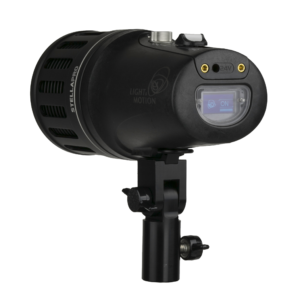
I know some of you are like “but exchangeable batteries are where its at!” With up to 700 minutes of run time, I think I’ll be OK, and if I’m anywhere near an outlet they have DC in 🙂 If the light that the Stella’s put out is anything near what is pumped out of my underwater versions (the SOLA light series) I am quite sure i’ll be running it on low pretty much the whole time.
So, please JOIN ME for the Stella Challenge. Find me at DEMA, I’ll be at the SUEX booth #1177 or out and about on the floor with a handful of mic’s and cameras and the Light & Motion Stella Light, pestering anyone who will hold still long enough for a brief interview or testimonial. We can chat about lights, cameras, and even diving!
Oh, did I mention that the Stella comes with a diffuser? No more paper napkins!!!
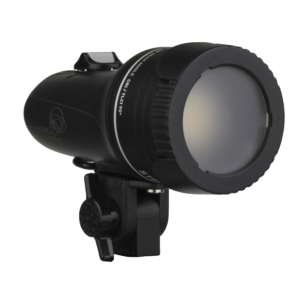
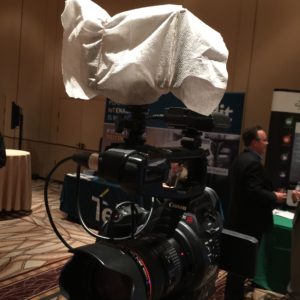
A few shots from the past year.
